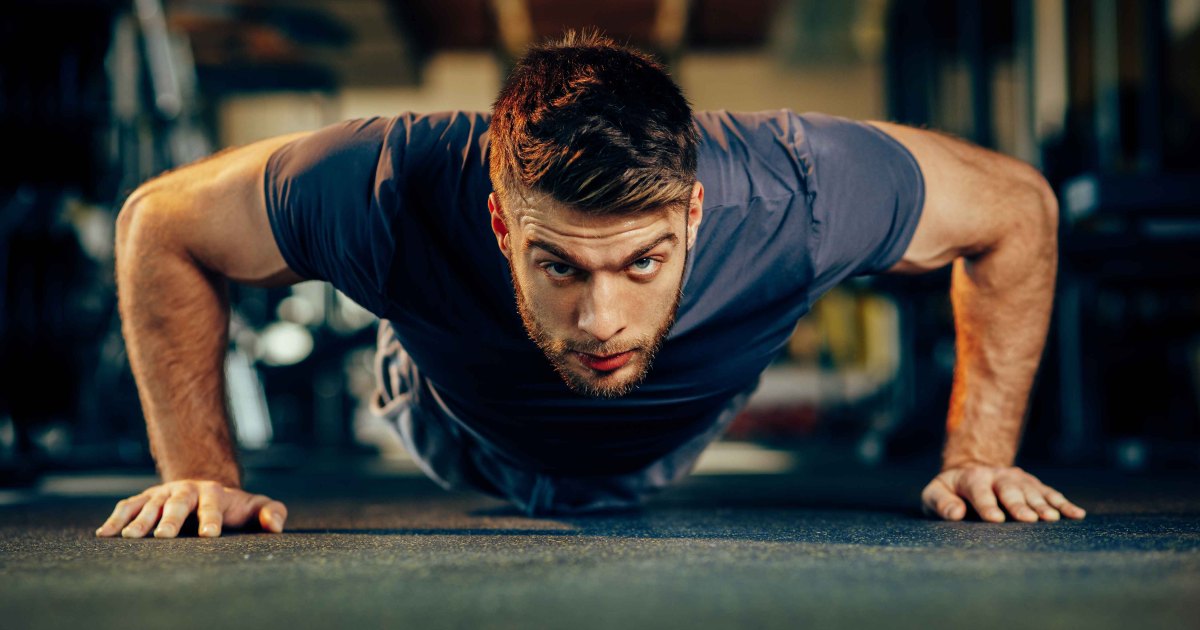Perfect Form Bodyweight Pushups

Bodyweight pushups must be the most primitive and basically far-reaching exercises in existence in the world of fitness. “Drop and give me 20” is one of the most hackneyed statements used by people who think they’re being coy with in-shape acquaintances.
The truth is, there are plenty of benefits to doing pushups, and most intermediate and advanced trainees have stopped doing them for one reason: they’re a bodyweight exercise, and they think they’ve “graduated” from them. Due to human nature, it makes perfect sense. If you’re bench pressing 300 pounds, a simplistic pushup won’t do anything for your strength or gains, right?
Wrong.
Pushups Vs Press Ups
There are several benefits to pushups that make it a largely different animal than dumbbell or barbell pressing variations. Here are a few:
- The shoulder blades aren’t pinned to a surface like they are on the flat or incline bench press. For that reason, the scapula can move through a healthy range as the arms press.
- The hips and trunk need to remain engaged for a good quality rep. That makes pushups much more than a chest exercise; it trains the entire upper body.
- It’s easier to manipulate the hand and elbow position, making the movement safer on wrists, elbows and shoulders than a bench press, which forces a lifter’s hands to be fixed on straight bars.
Bodyweight Pushups Tips and Techniques
Regardless of your starting position, the pushup must demonstrate a proper plank. That means the hips are held high, and there’s a straight line from head to heel.
The chin should be tucked, so the eyes are focused downwards to maintain spinal alignment. Looking up can cause neck strain and an overarch in the lower spine.
The body should pivot from the toe – in other words, there shouldn’t be a disconnect between the upper and lower body. It all needs to move in sync with each other.
Using full range of motion is mandatory. The body should lightly contact the ground or make it just an inch or two away from it, depending on your hand position and shoulder health. Your chest should be what makes it to the ground first. Not your face, and not your legs.
Don’t forget to squeeze your glutes. Avoiding this can create an overarch in the low back and disengage the abs from working.
Top 6 Bodyweight Pushup Variations
Bodyweight Pushup Variations
To take things up a notch, take advantage of the countless pushup variations that can make a simple exercise much more challenging and technical. They include:
Feet Elevated Pushups
Raise your feet on a bench or step, and perform pushups using exactly the same cues seen in the checklist above. You’ll target more delts and upper chest.
Narrow Grip Pushups
Bring the hands close together; no more than six inches apart, and tuck your elbows during the exercise. You’ll target the triceps and work your core harder due to a narrower base.
Single Arm Deficit Pushups
Place a low step or stacked plates under one of your hands and place the other hand on flat ground. Push all the way up, through to full extension on your “top” hand. You’ll be able to reach off the ground with the bottom hand, and touch the opposite shoulder. This is your first step towards a one armed pushup. Switch sides and repeat.
Plyometric Pushups
This one’s simple. Stay tight, and explode off the ground on each pushup. Your hands should leave the floor, but they should not clap. That’s a finger injury waiting to happen. Land softly and keep reps low.
Conclusion
It’s a simple pattern, but someone’s gotta break it down. At the end of the day, pushups aren’t something you “graduate” from. They’re a staple movement pattern that deserve their place as necessary ground work in most routines. They’re a “can’t go wrong” exercise that promote upper body and core strength and muscular endurance, and also promote a healthy functioning shoulder.
FAQs
Why should I do pushups?
Pushups are a basic exercise that promote upper body and core strength and muscular endurance, and also promote a healthy functioning shoulder. They’re a great addition to any workout routine, regardless of your size or training phase.
How can I make pushups more challenging?
To make pushups more challenging, try using variations like feet elevated pushups, narrow grip pushups, single arm deficit pushups, and plyometric pushups. You can also try adding weight to your body or increasing the range of motion.
What if I’m not strong enough for pushups?
If you’re not strong enough for traditional pushups, try starting with modified pushups from the knees or using a pushup assist like a Smith machine or resistance band. As you get stronger, you can gradually progress to more challenging variations.

